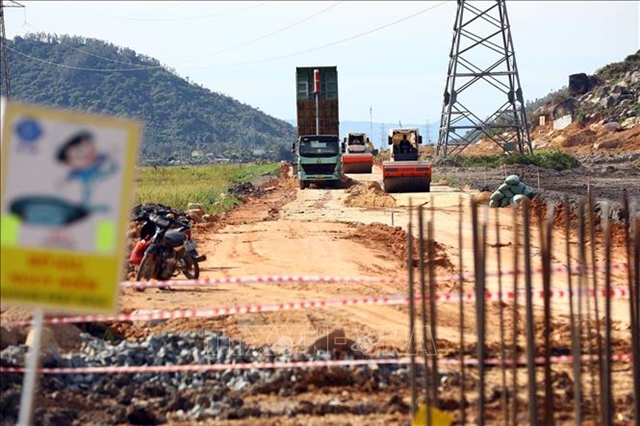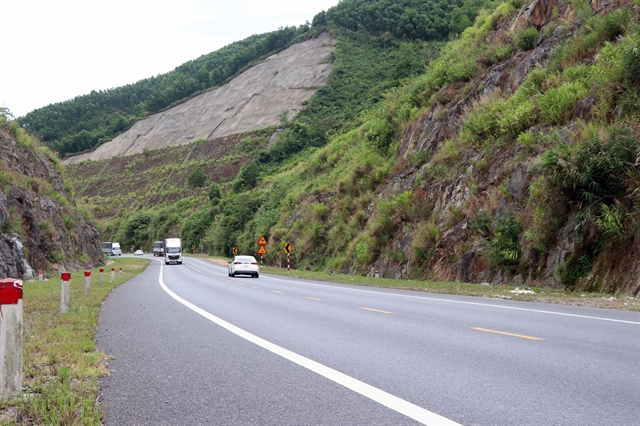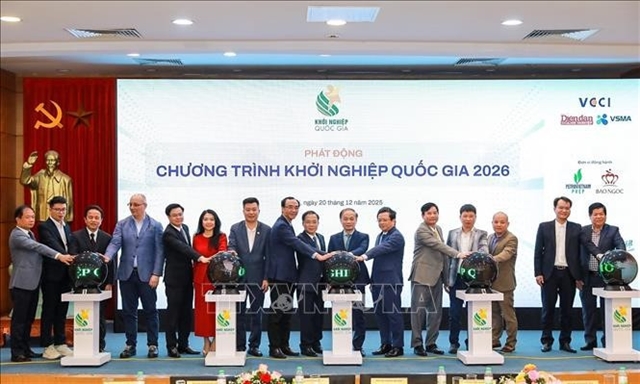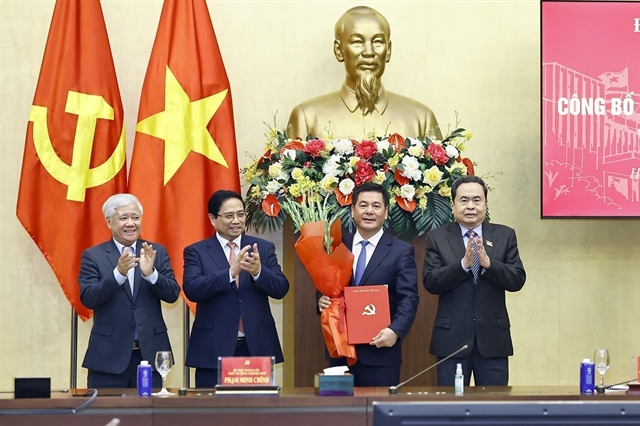 Society
Society

 |
| A section of the La Sơn-Túy Loan Expressway, which lacks an emergency stopping lane. — VNA/VNS Photo |
HÀ NỘI — Regarding transportation infrastructure investment, National Assembly Chairman Vương Định Huệ emphasised the need for a "biting off what we can chew" approach to avoid overstretching resources.
He was speaking at the discussion on a draft report monitoring the implementation of traffic laws on Tuesday.
Huệ cited the example of the La Sơn-Túy Loan Expressway, which lacks an emergency stopping lane despite having only two lanes.
He said the government and National Assembly have paid attention to addressing the shortcomings, but more comprehensive investment is needed for associated infrastructure such as rest areas to allow drivers to recharge physically and mentally on long journeys.
He also noted that the dense network of rivers and canals in the Mekong Delta remains underutilised for waterway transport, despite its potential to reduce road traffic volume. Only a small fraction of transport investment goes to inland waterways in the region.
He called for a strategic approach aligning central and local resources toward more balanced investment across transportation modes.
Deputy Minister of Transport Nguyễn Duy Lâm said his ministry has reviewed phased investment practices and issued standards for expressways to ensure safety once sections open to traffic.
The Supervision Delegation's report highlighted Việt Nam's significant progress in developing a more extensive and interconnected national road network. Prioritised investment has delivered new construction, upgrades and renovations on many key routes.
Law enforcement efforts to crack down on traffic violations have yielded positive results. Traffic issues such as drink driving, overloaded vehicles, unauthorised vehicle modifications and overweight trucks operating on roads have been kept well in check.
Congestion in major cities, including Hà Nội and HCM City, and on critical national highways, shows signs of easing. The number of traffic accidents, fatalities and injuries continues declining sharply.
Chairman of the National Assembly's Defence and Security Committee Lê Tấn Tới acknowledged persistent shortcomings in the formulation of legal documents and planning for road traffic. The legal system on road traffic has exposed numerous inadequacies and prolonged limitations.
He said investment in infrastructure in some localities falls short of demand; encroachment on sidewalks remains common; and regular funds allocated for road maintenance are still low.
He also underlined the loopholes in vehicle inspection and licensing procedures that have enabled many modified, overloaded or expired vehicles to remain in operation improperly.
Traffic law awareness and compliance among drivers remains low, Tới said, despite stepped up enforcement efforts having a positive impact by reducing accidents, congestion and severe incidents.
National Assembly General Secretary Bùi Văn Cường underlined the three key factors contributing to road traffic safety: traffic participants' awareness, transportation infrastructure, and vehicles.
He emphasised the need for assessments in each transportation sector and advocated a more balanced approach to investment allocation, pointing out that waterways offer the most cost-effective mode of transport, followed by railways and roads.
"Việt Nam has an extensive network of inland waterways and a long coastline, but investment in this area has been inadequate," said Cường.
Chairwoman of the National Assembly's Legal Committee Lê Thị Nga proposed incorporating traffic safety education in schools from an early age to build awareness. She also urged evaluating corruption risks surrounding traffic police and transport inspectors, citing recent public complaints. — VNS




